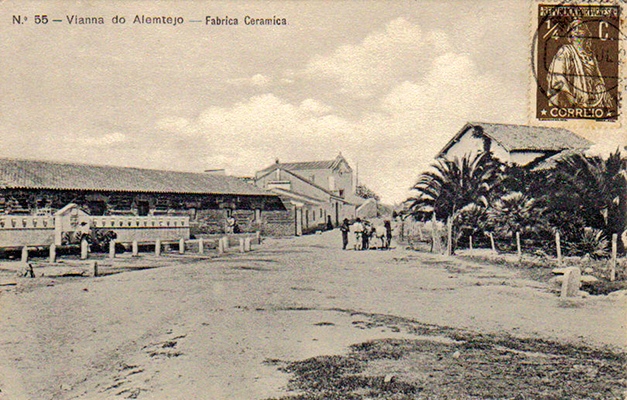 |
Also known as pottery school, workshop-school and ceramic school, its creation was promoted by António Isidoro de Sousa, in 1893, within the action of the South’s Wine and Olive Union. The designation given to the school is a tribute to his father, António José de Sousa, who was a doctor in Viana as of 1843.
This was one of the first industrial schools in Portugal and, according to João Sousa, the first oriented to the teaching of pottery. António Isidoro de Sousa’s goals were the practical teaching of processes related to the potter’s, crockery oven operator’s and ceramic painter’s crafts, and also the existence, in vacation time, of a drawing course applied to pottery, taught by an industrial schools professor. The Union was tasked with the disciplinary and financial administration, whereas the Minister of the Public Works, Commerce and Industry, who in 1893 was Bernardino Machado, the same person who commanded the official foundation of the school on the 28th October of that same year, was charged with the management and technical inspection.
For the effective foundation of the school was needed the financial contribution of the Union (to which António Isidoro de Sousa lent part of the money), of the Institution of Piety and Beneficence, the parish, the city council and the population, by public subscription. The Minister of Public Works invested a small sum.
In 1894, the drawing course was taught at night in the chapel of São Sebastião (Saint Sebastian), with an attendance of 47 people.
The purpose of creating the school was to teach the popular classes, giving them a craft and, thus, a livelihood, stimulating at the same time the local economy. Skilled labour was intended to assure a constant production in time and space. The school democratised the access to clay work methods and technics, which before were limited to some potter’s families.
It had notable masters and professors, such as master Francisco Lagarto, of great quality as potter master and of elevated human qualities; the painter Júlio Resende, who was probably the precursor of ceramic painting in Viana; and professor Aníbal Alcino, who modernised the work and teaching methods.
The school began to decline in 1900, followed by the decline of the Union itself, which accused financial difficulties.
Already in 1948, the school was turned into a pottery workshop, in the outbuilding of Évora’s Industrial and Commercial School (nowadays Gabriel Pereira High school). But in the academic year of 1953/1954, it reached about 70 students, being this the most brilliant year of its existence.
In 1964, the workshop was transformed in the portuguese Educational Preparatory Cycle, continuing, nevertheless, in the outbuilding of Évora’s school. However, in 1968 the Preparatory Cycle became independent and the school was renamed to Preparatory School António José de Sousa. Pottery was, then, an individual subject no more and was inserted in the Handicrafts subject.
REFERENCES
ALCINO, Aníbal, Um professor no Alentejo: crónicas, s.l., Câmara Municipal de Viana do Castelo, 1989.
BANHA, Luís Miguel, ILARVS: Contributos para o estudo da olaria tradicional de Viana do Alentejo, Viana do Alentejo, Câmara Municipal de Viana do Alentejo, 2014.
ESPANCA, Túlio, Inventário Artístico de Portugal: Distrito de Évora: Concelhos de Alandroal, Borba, Mourão, Portel, Redondo, Reguengos de Monsaraz, Viana do Alentejo e Vila Viçosa, Lisboa, Academia Nacional de Belas-Artes, 1978,Tomo IX, Vol. 1.
GAMEIRO, Fernando, Com engenho e arte: ensino técnico em Évora durante a I República: a Escola Industrial e Comercial Gabriel Pereira, Lisboa.Évora, Colibri.CIDEHUS-UE, 2011, (Biblioteca Estudos & Colóquios, 26).
SOUSA, João Manuel Santana de, História da Primeira Adega Social Portuguesa, Viana do Alentejo, Câmara Municipal, 1993.

 Abrir Lista
Abrir Lista MUNICÍPIO DE VIANA DO ALENTEJO
MUNICÍPIO DE VIANA DO ALENTEJO